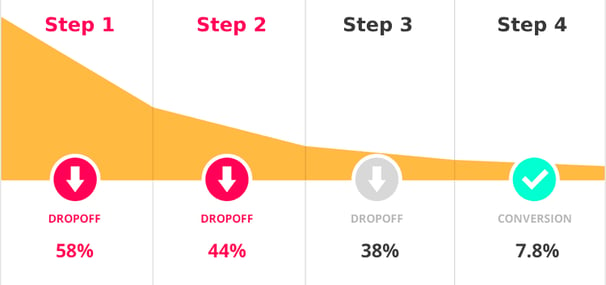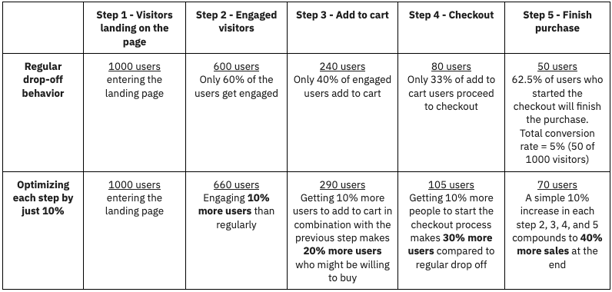Why Better Tracking Leads to Better Results
Many decisions in the business are driven by gut feeling and surface-level metrics to guide their marketing efforts. But surface-level data doesn’t tell you why someone didn’t buy, or which campaign actually brought high-intent visitors.
5/8/20252 min read

Let’s say your analytics dashboard shows that 500 people visited your website after clicking on a Facebook Ad. Out of those 500, 400 left right away, 90 stayed for a little while but didn’t take action, and 10 ended up purchasing.
In summary:
500 entered the website
400 left almost immediately,
100 engaged with your content,
10 completed a purchase.
Great, right? That’s 10 conversions! You might even think, "It worked!" and in a way, it did. But that’s where most businesses stop thinking. They see the headline metric, smile at the cost-per-acquisition, and keep running similar ads.


Why Surface Metrics are Misleading
Here’s the problem: why did the 490 people didn’t buy?
And that’s where the biggest growth opportunities are hiding.
Let's Ask the Real Questions
Why did 400 people leave immediately?
Our first job isn’t to celebrate the 10 conversions, it’s to figure out who those 400 were that bounced. Because if your Facebook campaign is consistently sending the wrong type of visitor, no amount of website optimization will save it.
WHY the other 90 stuck around but didn't convert?
That middle zone most dashboards ignore. People who stuck around, maybe clicked, maybe scrolled, maybe visited the pricing page, but didn’t buy. A certain percentage might be a high-intent visitors, those who needed a nudge, a better CTA, a limited-time offer, a stronger testimonial, or just a retargeting sequence to bring them back when they’re ready.
who are the people who purchased?
Now we are focussing our attention on studying who those visitors are, who actually purchased the product or service. What do they have in common? Where are they coming from? And how can you get more of them?

Effective optimization starts with understanding how visitors interact with your site and where opportunities for improvement exist. Without structured tracking, marketing adjustments are often based on assumptions rather than evidence, leading to missed opportunities and inefficiencies.
Even small, data-driven improvements at each step of the journey create a compounding effect.


How Structured Visitor Tracking Leads to Higher Conversions
An average conversion rate generally falls between 2% and 5% across various industries. However, this is a broad range, and specific industry averages can vary. Let’s assume the total conversion rate for an imaginary business is about 5%. This means that out of 1000 users on the page, 50 users buy the product or service.
In following a typical breakdown
Result: Overall conversions improve by approximately +40%, without requiring major redesigns or large budget increases.
A professional services client improved their form engagement by +12% and checkout completions by +9% simply by adjusting messaging and fixing minor technical friction — changes identified directly through structured visitor tracking.
As a result, their conversion rate increased by 28% within 6 weeks, without increasing ad spend.
Accurate, actionable tracking enables targeted optimizations at every stage of the customer journey, driving more efficient marketing spend, better customer experiences, and higher overall revenue.

get in touch
Let's chat, we would love to help you grow
Need more information? Let our experts help.
